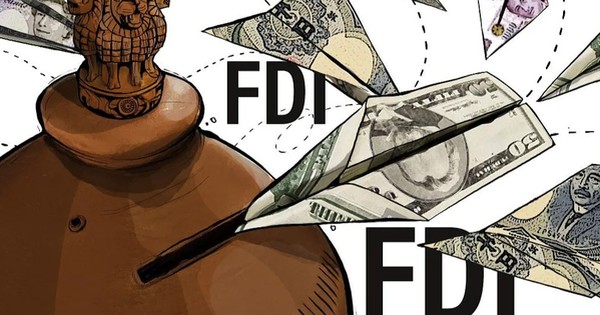What’s Happening with Asia’s Fastest-Growing Economy that Aims to Replace China?
The Nikkei Asian Review reports that India’s GDP growth for the fiscal year ending in April 2024 is forecasted to reach 7.3%, making it the fastest-growing major economy in the world. This news may come as a surprise to many experts, considering that just ten years ago, India suffered heavily from the tightening monetary policy of the US Federal Reserve (FED) and experienced a significant outflow of foreign capital. However, after two years since the FED officially raised interest rates, the economy of this South Asian nation is proving its resilience and its ambition to replace China as the new global manufacturing hub.
But behind the rosy picture of India’s economy, there are still several concerns that worry experts. Despite the stock market’s impressive performance and positive economic indicators, the attractiveness of India seems to be waning. Foreign direct investment (FDI) in the country has decreased to its lowest level in a decade.
According to Capital Economics, the FDI-to-GDP ratio in India is the lowest it has been since 2005. Furthermore, the Department for Promotion of Industry and Internal Trade (DPIIT) reports that FDI inflows into India dropped by 21% in 2023, reaching only $41.31 billion. Many promising projects have been announced but ultimately abandoned or cancelled.
For example, in July 2023, Taiwan’s Foxconn Technology Group withdrew from a $19.5 billion joint venture to produce semiconductors with Vedanta Group, a local conglomerate. Prior to that, Sony also pulled out of a $10 billion deal to merge its local operations with Zee Entertainment, an Indian television network.
“The FDI inflow in India has been declining for the past year,” states a recent report by J.P. Morgan. This decline raises concerns among experts because India requires job creation in the manufacturing sector to serve its large low-skilled labor force. The advantage of having a young workforce can only be realized if FDI generates employment and income; otherwise, it becomes a burden on the economy, leading to high unemployment rates.
India recognizes the importance of attracting FDI to establish factories, create jobs, improve income levels, and enhance its position in global supply chains. Initiatives like “Make in India” and the Production Linked Incentive Scheme (PLIS) aim to persuade automotive and electronics manufacturers to set up plants in India. However, according to Nikkei, the country’s import barriers, tax complications, discriminatory treatment of foreign companies, and policy unpredictability have hindered FDI inflows.
In August 2022, India tightened tax incentives for foreign investors after many domestic firms exploited loopholes by sending money abroad and reinvesting it domestically to bypass regulations. However, this change has also affected the mindset of genuine FDI companies, coupled with higher interest rates in the US, making the risk and cost of investing in India rise.
Even with its cheap labor force and a potential market of 1.4 billion people, India faces the challenge of increasing economic concentration. Many local interest groups and domestic companies dominate various sectors of the economy and resort to every means to eliminate competition. This poses a significant challenge for international corporations that are unfamiliar with the local business culture when trying to enter the Indian market.
Nikkei notes that many domestic conglomerates, such as Gautam Adani’s empire, have become so powerful that they no longer need to seek international cooperation or foreign capital, unlike ten years ago. “Most major local companies in India do not want or need to sell their shares anymore. They have enough capital to operate independently,” said a senior director at the Bank of America’s Mumbai branch.
The history of seeking government support to block new competitors, whether foreign or domestic, is deeply rooted in India’s business community. The stories of the “License Raj” and the “Bombay Club” in the 1990s are believed to have significantly hindered the opening of the country’s economy. Increasing barriers to entry in India are increasingly disappointing foreign investors.
One prominent example is the South Korean steelmaker POSCO, which abandoned a $12 billion plan to build a plant in Odisha in 2017 after a 12-year effort. Despite the project being disputed by local residents due to environmental concerns, Nikkei suggests there were connections to local competing steel mills that aimed to prevent POSCO’s presence.
Even renowned companies like Tesla are facing resistance from local automobile manufacturers, who are lobbying to block Tesla’s entry into the market. Although Elon Musk is negotiating tax incentives to build a factory in India, an agreement has not yet been reached.
India’s economy is undoubtedly one of the fastest-growing in the world, but it still faces challenges to attract foreign investments. The government needs to address the issues of import barriers, taxation, and equal treatment of foreign businesses to ensure sustained economic growth and maintain its ambition to replace China as the global manufacturing hub.
Nguồn: Nikkei

